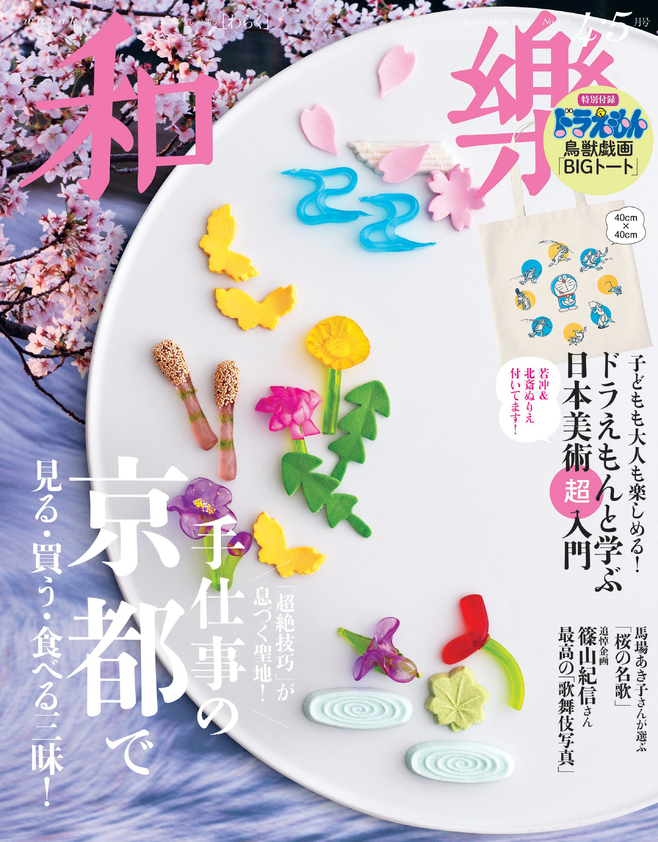Speaking of ninjas, Iga (Iga) and Koka (Koka) are the existence that is synonymous with that. As introduced in the first part , they were not known to be in power, and it was known during the warring states that they were a group that manipulates the horrible "Ninjutsu", taking the Shogunate army led by Ashikaga General (Ashiga) as their mind. It was
However, those who are called "ninja" and "Shinobu" are not in Iga and Koka. In the world of warring nations, the daimyos of various places hired Shiga of Iga and Koga, and also used Shinobus of the nearby people. In [The secret art of ninjas and mysteries, the second part], I introduce the dark movements of ninja groups that supported the daimyos in various places, and the numerous secret works used by ninjas, which have been transmitted to the present day.
"Shinobi" and "Transmission (Suppa)"
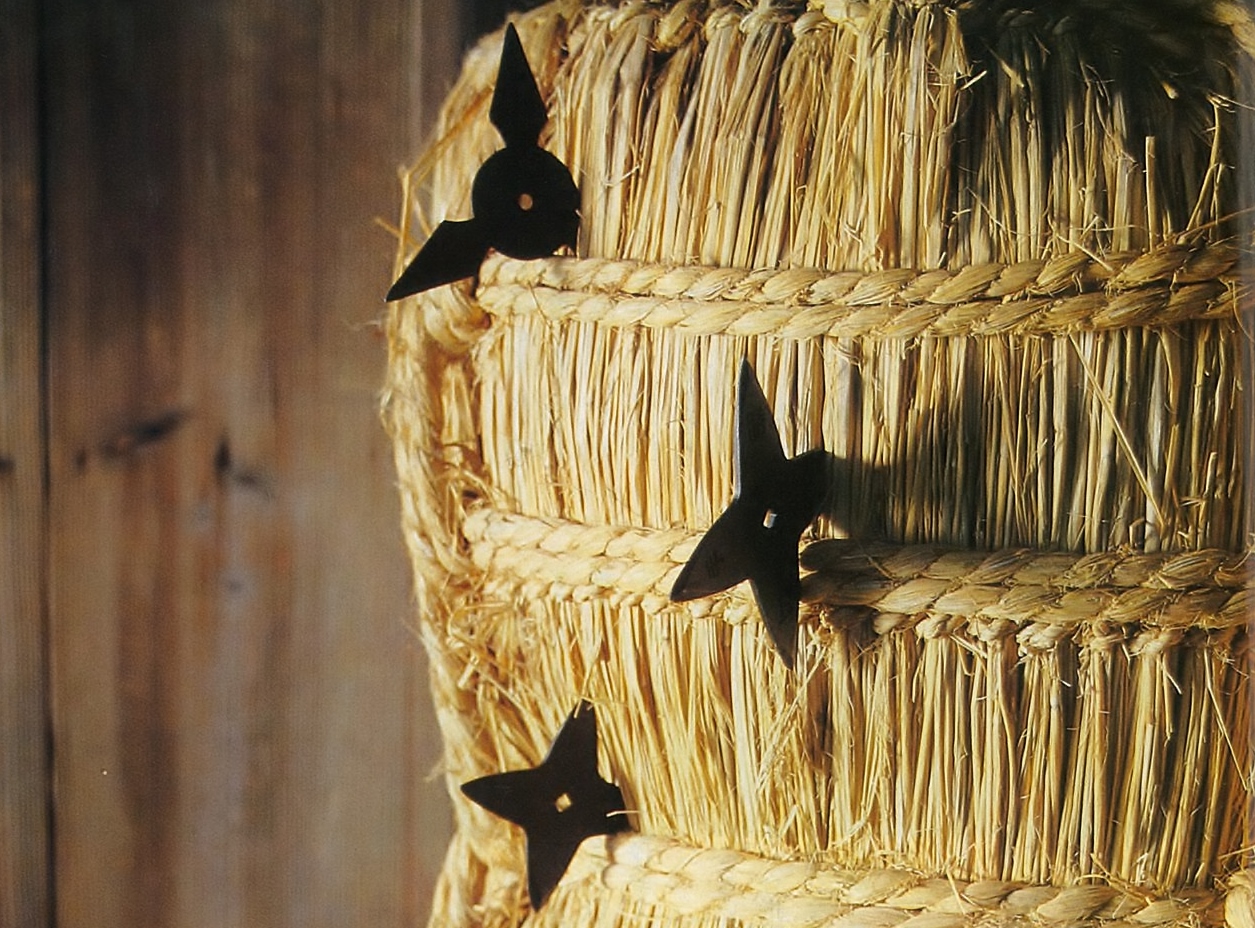
There is a word, "Ninjutsu is theft" . A ninja is a ninjutsu because it takes orders and infiltrates the enemy's whereabouts and steals information and goods. If this is not an order, but acts as a self-interest, it can be considered as a mere thief. Become. What separates ninjas and thieves was what to use the trick for. Conversely, it can be said that "If you give a task to a thief, you can become a ninja-like existence ."
Under such circumstances, it was the people called "Suppa" that appeared in the Warring States period. Suppa means "deception (giman), idiot (Kyogen)" in the language of those days, and speaking of a supapse, it means "a person who is a fool and a man." By the way, today, it is said that being out of place is called "spun out" , but this is considered to be derived from the fact that the spud suddenly removes the knife. It is not a very good word, but in the end, daimyos hired the kind of field warriors and robbers and gave them a mission as a ninja.
For example, Takeda Shingen of Kai Country (now Yamanashi Prefecture) was familiar with distant country information as having the nickname “Ashinagado” , but it was It is said that the work of the ninjas, who are called the “three-man” , was great. "Three people" means the role of "intelligence, strategy, inspection", and Tomita Go Saemon (Tomitomien) was dispatched. In addition to three people, Shingen is also a source of religious people who walk through countries such as Shugenja, Oshi, and lower priests, Miko, and Towa (Suppa) as sources of information. It is said that he used it.
Takeda's "Tsubami" (Suppa) and Kumatena of "Daten"
 "The flag of grandchild" used by Shingen Takeda. Known as "Fulin volcano"
"The flag of grandchild" used by Shingen Takeda. Known as "Fulin volcano"
The fact that Shingen used toki as a secretive activity is also described in the Koyo Gunkan. "Especially 30 out of 70 people from" Suppa "who were invited from Shinano (now Nagano Prefecture) were selected, and 10 of them were entrusted to three warlords such as Obutoramasa and others. Then, 10 people infiltrate the territory of Murakami (Murakami), Mr. Suwa (Suwa) and Mr. Ogasawara (Ogasawara), who are hostile, and collect information. I told him, and he was delivered to Kofu by a horse. You will be able to see the end of the transmission wave that works as a stealth.
There was a fast-paced young man named "Kumuka" in Tonami of Takeda. One day, when Iitomo Toramasa went on a battle to Shinano, he realized that he had forgotten the flag, and ordered Kumawaka to bring it from Kofu in the blink of an eye, turning around for the first time. 'S generals are surprised.
In addition, an incident occurred in which “Kotowa Waka-shu” of Shingen treasures was stolen from the hall (Kayata), and Kumawaka was suspected, but he pursued, captured, and revealed the innocence of the perpetrator who flew fast and ran away. . It is also said that the offender was the hand of Fuma under Hojo.
Hojo's turbulent waves (trumpet) "Fuma party"
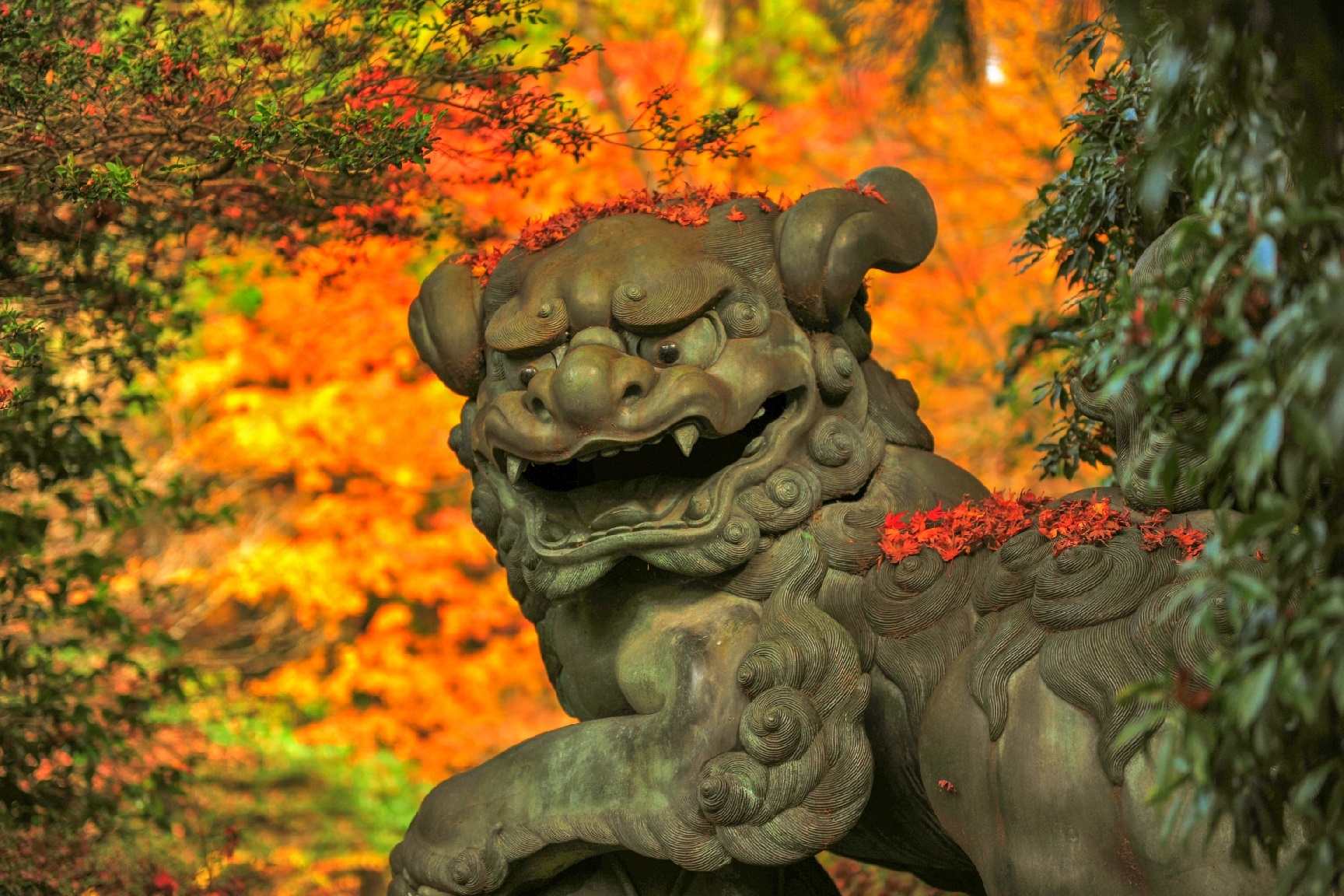 Hakone Shrine. It is said that Fuma was based in the Hakone area
Hakone Shrine. It is said that Fuma was based in the Hakone area
Hojo , based in Odawara Castle in Sagami (currently Kanagawa Prefecture), has been aiming for the conquest of the Kanto region for about 100 years for five generations since the first generation of Soun. Ashushu Ramba (Rappa) who cooperated with the Hojo is " Fuma One Party" . I also referred to Tonami as "Trap" in Kanto.
Fuma was originally Kazama, or Fuma, and was based in Sagami-kun Ashigarashimo (Ashigarashimo) county, and its head is said to have named "Fuma (Kuma) Kotarou" . What became known as the wind "devil" is probably because it is fearful.
Ojiwara Hojo 's third generation Ujiyasu (Ujiyasu) was a rival of Takeda Shingen and Uesugi Kenshin (Uesugi Kenshin), but in the letter of that Mr. Yasushi, “I received the instruction of Kotaro Kazama of Aishu ( It has been sent secretly to find out the situation of the enemy army of Sagami Kasahara Castle. You can see that the Fuma party was supporting Shiho, Hojo.
In the article "Hojo Jodai 5 's" in the military writings, "There is a lot of people who know the state of the countries well, and there are a lot of people who do evil things as a person. At one time he raised martial arts, and hid in the bushes and grass shades to look at the enemy every night and return to the dawn without being realized by the enemy, "says the work of the turbulent waves. In addition, it can be said that the disorder is "a person who commits evil as a person who works as evil , " although he does a commanded shivering work . In fact, some of the Fuma members were bandits, pirates, robbers and thieves.
It is the first time in the Fenma 1 party's battle to be seen that the Kisegawa of Kiyoshi Hojo (Ujimasa) and Takeda Katsuyori (Tataken Katsura, son of Shingen) in September of Tensen 7 (1579) It will be a battle (currently Numazu City, Mishima City). At this time, the Fuma party defeats Takeda's team on the other side every night. Even if the weather is bad, they attack as if they were alive and killed generals, slammed off the ropes, robbed horses, set fires in the camps, robbed weapons and food, etc. Takeda forces in the war started gradually I was exhausted.
However, even if Takedakata is also a 一 報 (Ikumoku), one night, 10 Toda's Tonami will be mixed in with the wind and headed for the enemy team. Then Fuma turned on torches all at once with the signal of his head and sat and stood while speaking out to each other. Takeda's Tonami didn't know why, and while it was down, everyone was killed. It is said that the secret word is not Japanese, as it is an identification method of "rising, living (i) curiosity" to confirm that the enemy is not mixed up. It is an anxious episode about who the Fukama first party really was.
Sarutobi Sasuke's prototype Sanada's "grass person"
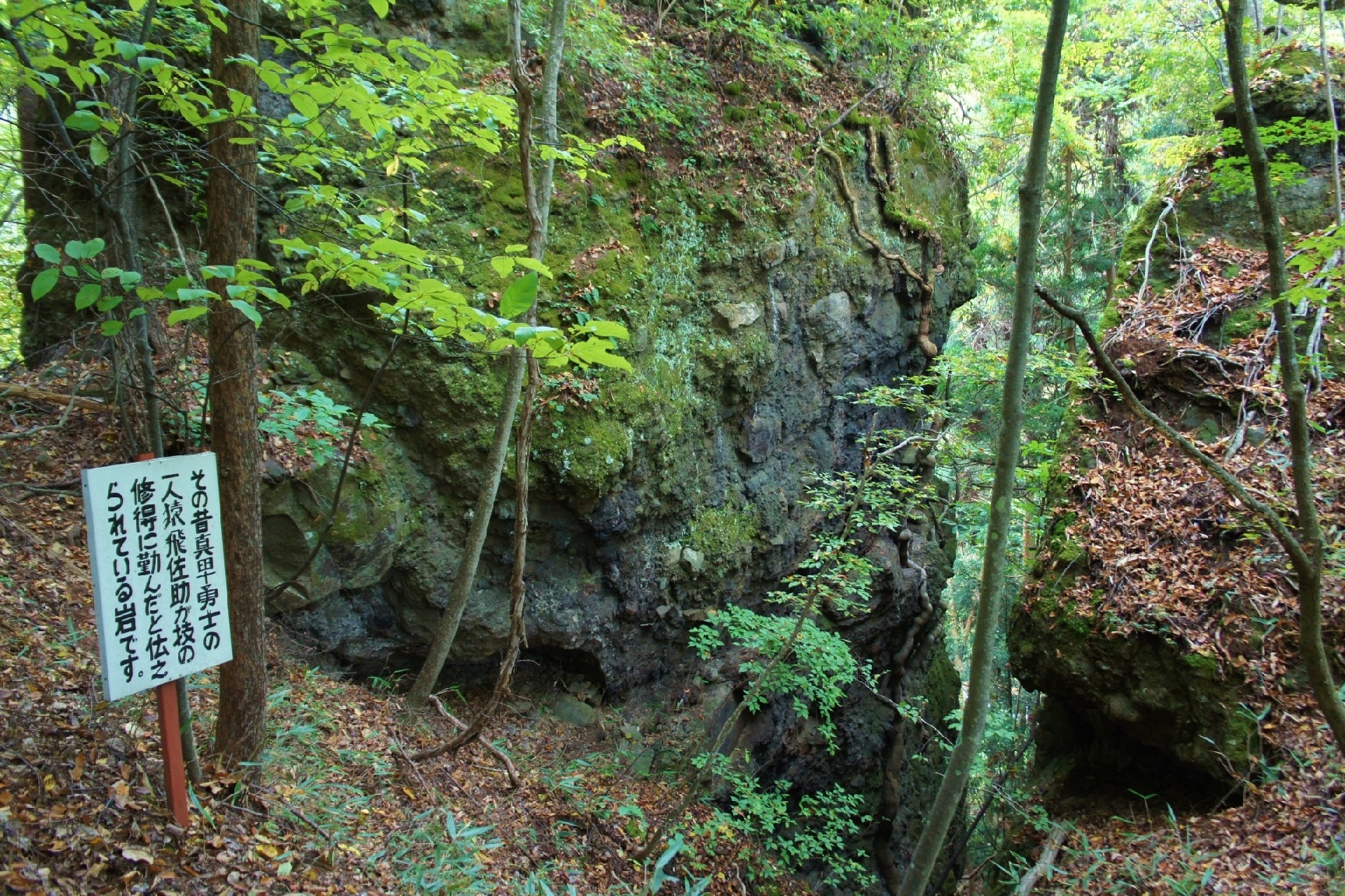 The Kakuma Valley. It is transmitted that the "Glassman" of Sanadago Shinobu mastered Ninjutsu
The Kakuma Valley. It is transmitted that the "Glassman" of Sanadago Shinobu mastered Ninjutsu
Speaking of ninjas, Sarutobi Sasuke and Kirigakurezo, etc. appearing in "Sanada Jyuushi " are well known. Of course, they are fictitious, but it was true that Shinshu's Sanada was good at collecting information that used Shinobu and guerrilla warfare.
Originally, Shinshu is popular for mountain religion, and there is also a birth of Togakuryu Ninjutsu and Izuna (Izuna) law (a kind of magic). Mr. Mochizuki of Koga was a family of Mr. Mochizuki of Shinshu.
Based in Sanadago, eastern part of Shinshu, Mr. Sanada serves Takeda Shingen in Yukitaka's generation and spreads power to Ueno's Agatsuma region. Yes. When Takeda dies, Yukitaka's son, Masayuki , becomes an independent daimyo and survives skillfully while being surrounded by the great power daimyos. While continuing the last game, it was the Shinobi who was in charge of collecting information called Sanada's "grass person" . And it was them who were bundled up by Masayuki Ideura, Masaaki Ideura (with Moriki) , and he himself used Ninjutsu. Susumu Terashima played Deura in the Taiga drama "Sanadamaru" in 2016.
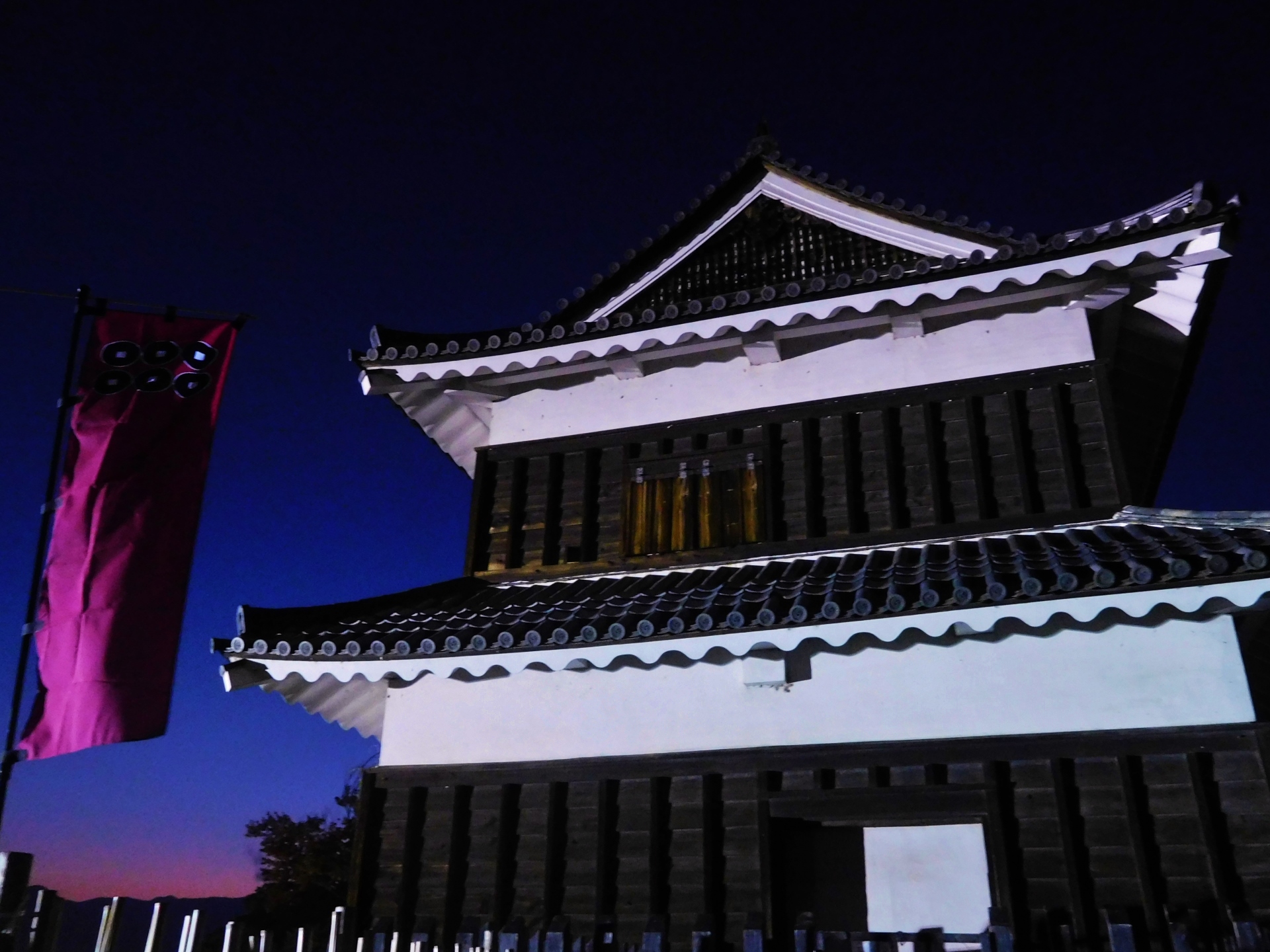 Sanada's castle / Shinshu Ueda castle
Sanada's castle / Shinshu Ueda castle
In addition, it was the first Ueda Battle (tensho 13 <1585>) and the second Ueda Battle (Keicho 5 years) that the name of Sanada was known to the world by defeating the Tokugawa great army twice in Shinshu Ueda Castle. It will be 1600 で し ょ う). Sanada 2000 will attack Tokugawa army 8,000 in the first and 30,000 in the second. Then they showed up and fled the enemy to the castle and took a barrage, and when the enemy receded, they were tossed and repulsed in a guerrilla tactic to shoot fire from all over the castle town. It goes without saying that there were dark movements of the grass people there.
Shoko's son Nobushige (Nobushige, Yukimura <Yukimura>), who inherited the tactics, is the Osaka Winter team in Keicho 1914 (1614), and the Shogunate army led by Tokugawa Ieyasu in Sanadamaru. It was a long time ago. In the summer of the following year, Ieyasu attacked the main team and managed to keep Ieyasu on the verge. The people of the grass should have been behind the activity of Nobunshi, and the prototypes of Saruhi Sasuke and Kirigakuzou were here.
Uesugi, Date, Mouri, Tokugawa ... A group of ninjas who served other daimyo

Proficiency. Also called Yamabushi, they were deeply involved
It is generally known that Echigo (currently, Niigata Prefecture) Uesugi Shinshin used a shinobi group called " no monkey " for Tonami in Takeda and Fuma in Hojo. It is believed that the name is derived from the euphemism of China, the founder of Ninjutsu (Ken'en) , but there is no record in the literature using a monkey by Shinshin , and instead "Fushinagi" "that has been written in the name. During the 4th Battle of Kawanakajima in Nagai 4 (1561), it was Fushimi that it was informed that Takedas had left Kaizu Castle. During the Edo period, the Uesugi family called Shinobui "Yatogumi" .
In terms of expression similar to the night robbery of the Uesugi family, the Shibabi of Date Masamune under Oshu is called " Kurohabikigumi ", and his legs are black on his legs. Han had been wearing. The subordinates of Maeda Toshiie in Kaga (currently Ishikawa Prefecture) are called "Nusumigumi", and they are said to have been bundled by Four Horses. It is interesting to note that all the names are reminiscent of their predecessors being thieves.
“Hachiya-shu” is one of the most famous in the Chugoku region, and Ikumo Kashihisa, who lost Tsukiyama Tomita Castle in Izumo (now Shimane Prefecture ) Helped recapture the castle. After that, he said that he left Ms. Yuko and supported Mouri Motonari . In addition , it is Shinobi group called "Yamakuguri" which cooperated with Mr. Shimazu of Satsuma (now Kagoshima prefecture). It is mainly composed of masters, and it is said that it uses a magic technique sometimes called "Hyodo".
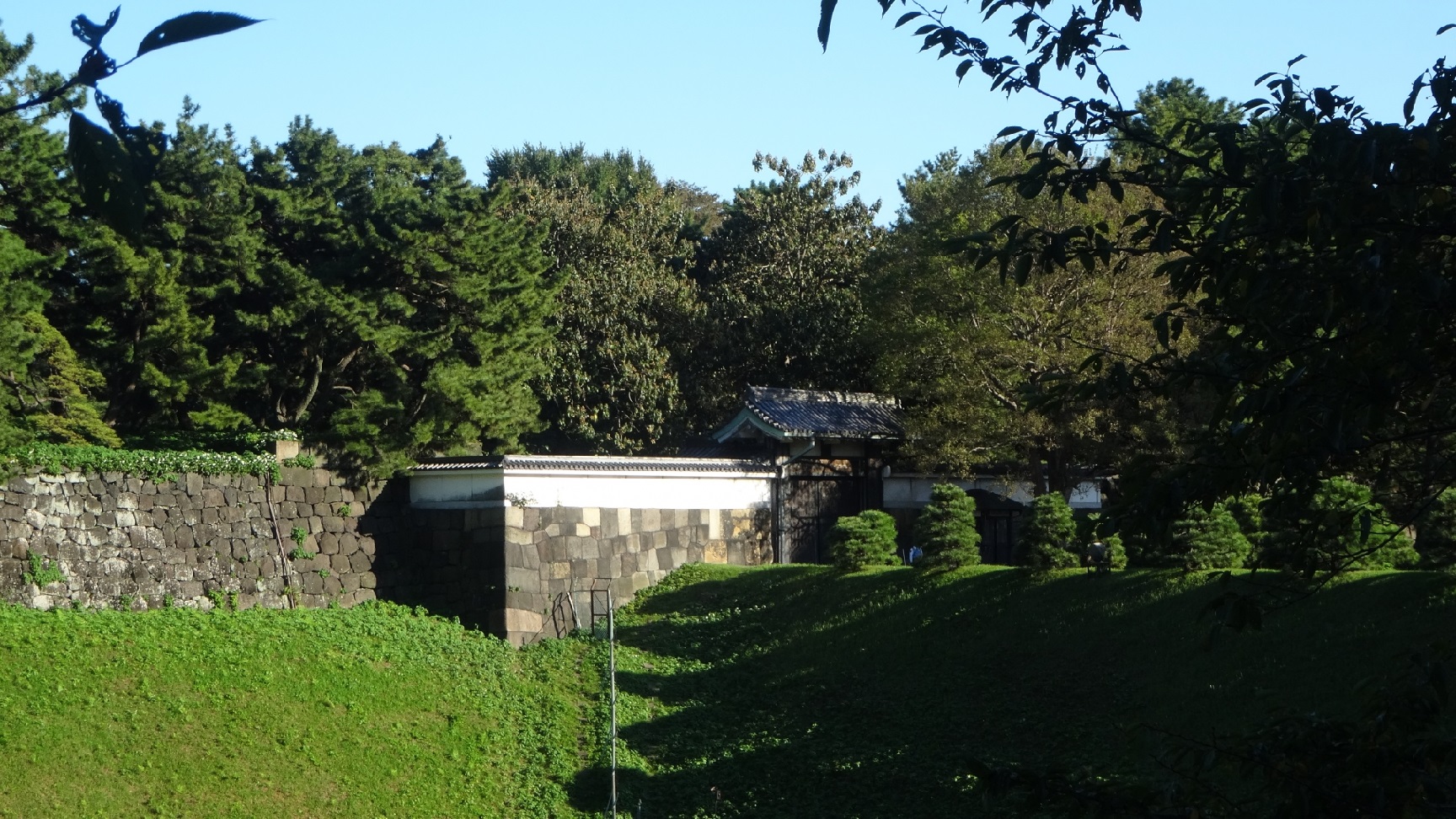 Edo Castle (now, Imperial Palace) Hanzomon. The name was given because there was a house in Hattori Hanzo in the gate.
Edo Castle (now, Imperial Palace) Hanzomon. The name was given because there was a house in Hattori Hanzo in the gate.
Well, maybe you realize that perhaps the name of the most famous ninja in Japan has not come out yet. It is Hattori Hanzo Masanari of Iga. Hanzo, who served the Tokugawa family from his father's generation, led the “Iga-gumi,” which was ordered by Ieyasu and composed of 200 Iga. However, although Hanzo is an Iga-san's lineage, he is a warlord and not a ninja . In addition, Iga people of subordinates say that they are dissatisfied with obeying that the bloodline of Hanzo is lower than their ancestors in Iga, so it may not be surprising at all.
Infiltrate, get information, and chase ... a number of myths to accomplish the task
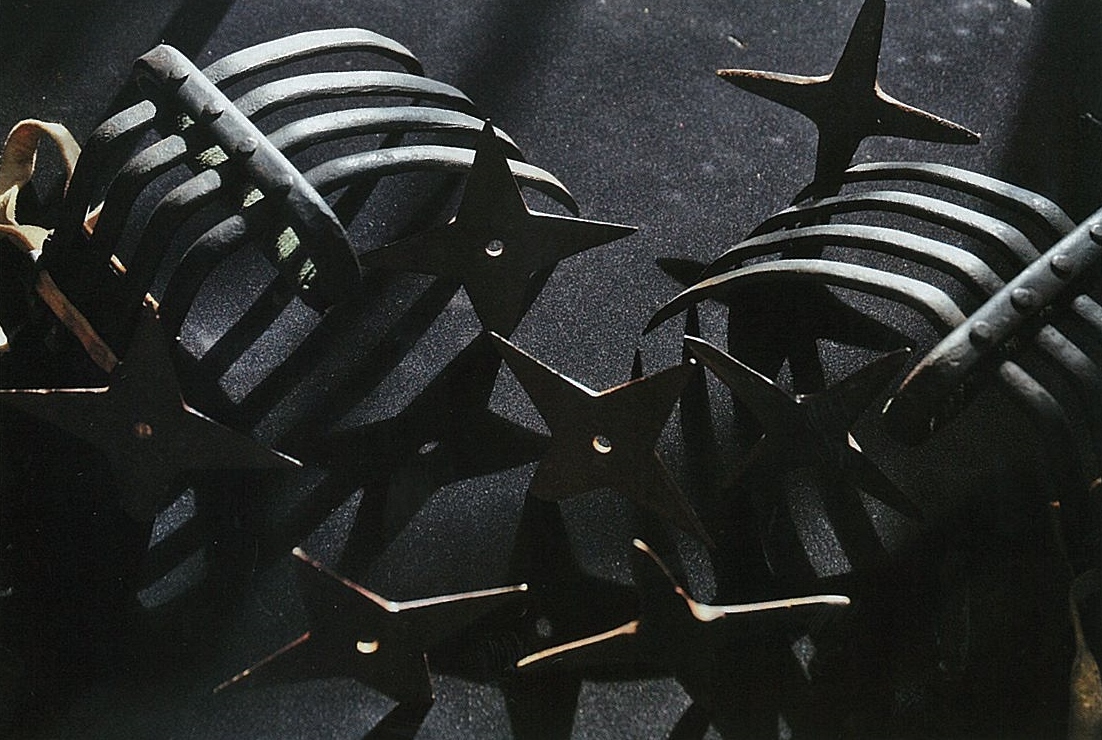 Many ninja gear
Many ninja gear
Next, let's look specifically at what kind of technique the ninja used.
The succession of various ninjutsu was done in the oral tradition (Kuden) of the clan one party, and was remembered in the discipline. However, when the warring world is over and the need for ninjutsu begins to fade, it will be difficult to pass on oral communication, and some messages will be written. The representative ones are "Shugawa Ikai" written by Yasutake Fujibayashi (1676) in Yasuro 4 years (1676), and Masatake Fujibayashi (Masatake) in the same year (1681). It was “Shoninki” written by ) .
In particular, “Shugawa Izumi” volume 22 is a collection of Ninjutsu, and the content consists of six. That is, "I, righteousness (ninja's ethics), two, Moshi (conductor's knowledge), three, yoshinobu (strike, far-off), four, yinshin (infiltrating, surprise attack), five, ten "Geography", "6, Shinobi (Azeri, firearms, water vessels, various medicines)" were able to know the concrete image of Ninjutsu. Based on these contents, I will introduce some of the techniques that are considered to be reasonable among the techniques that are now handed down.
Six basic tools for performing 1 stole
You need various tools to do screeching, but if you bring a lot of things with you, it's bulky, heavy, and it interferes with your movement. Therefore, it is basic to use versatile tools. In other words, it was "knitting bowl, crotch line, stone brush, medicine, three-length towel, uchitake" .
Knitting fences can hide their faces, and ropes can be used for tying things and people, for climbing on the banks, crossing moats and rivers. A writing brush made of wax is used as a rod. Medications are particularly effective against stomachaches. You can tie a hand towel or hide your face. The bamboo shoots are used to ignite, and these six types were basic.
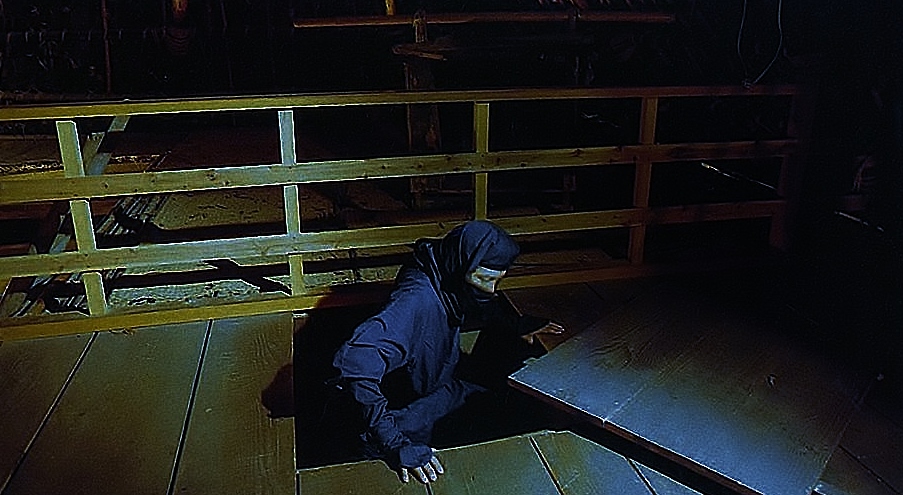
2 Nighttime infiltration clothes and daytime disguise
When infiltrating at night, the clothes used dark, inconspicuous colors such as brown, dark brown, dark blue, etc. which were dyed with persimmon juice rather than familiar black costumes in dramas and the like. It is said that I painted the area where the skin was exposed sometimes and made it inconspicuous. It seems that black clothes are avoided because they stand out on the moonlight.
On the other hand, in the daytime disguise, I changed into various occupations depending on the occasion and the case. Basically, monks, komon monks, learners, merchants, entertainers, etc. who are not suspected even by foreigners are considered suitable.
3 "Double breath" when traveling long distances
It is a breathing method when traveling through a long distance, and it repeats "sucking, spitting, spitting, sucking, spitting, sucking, sucking, spitting". It is similar to "Ssu-tsu-ha, Ha-ha-ha" of the main character of Taiga drama "Kanri-shi", and it is distracted by taking a rhythm, and it is said to be a breathing method that raises the amount of oxygen inhalation.
4 Pass the pass, go through the pass
When I crossed the samurai, I tied the sword's trumpet to the ankle, put the sword at a slight angle, stood on the eagle, jumped up with the crow's foot and jumped to the top of the moth. If you can not do that, go around the area, examine it well, dig a hole in the ground under the foot from an inconspicuous place, and infiltrate it. This was called "Anagu Mojigumo" . It resembles the appearance that a silkworm is putting on a net.
5 Ishigaki Togo (Tohan) is from a difficult place to climb
When infiltrating castles etc., Ishigaki is easier to climb on the corner (corner), but that's why the lookout is strict. So I dared to choose the central part where it was difficult to climb, and I drew the back of the discipline. It is sometimes used as a foothold like Haken for mountain climbing.

Walking method after 6 infiltration
In places where we can not stand and walk, such as under the floor of an infiltrated house, we had the training to walk freely on all fours. This is called "Inubashiri" . Also, in the ceiling and in places where you can not hear a bit of noise, walk with four toe crawling. I called this a "crunchy" . When infiltrating a room, it is said that the sound was erased by wearing a thick cotton leather foot pouch (everytime). Furthermore, in the dark, I bend my hips, take out one leg in front and search while moving my weight with my hand. This was called the "forefoot ."
7 Hide yourself from the chase
Inside, it sticks to the ceiling and makes the pursuit eyes blind. The ninja was training to lift the rice bran with a thumb and a forefinger. If your weight is lighter than rice bran (about 60 kg), you can stick to the ceiling with one hand.
In the outdoors, hide climbing a tree "raccoon (raccoon) hidden", still to hide his face with such sleeves "Kannon (Kannon) hidden", there is a crouch to hide the face "quail (quail) hidden", at night In that case, I was able to get rid of the sign and pass the pursuit. In addition, using a gunpowder or putting up an explosion to distract the enemy's attention, and to escape from that gap is called "En-ton", which is considered to be a ninja's specialty.
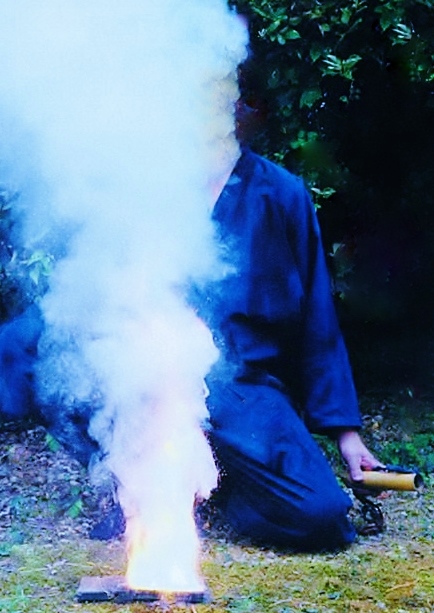 Smoke
Smoke
8 Attack the chase and enemies
"Makibishi" is put on the pursuit path. I could stick to the soles of my feet with bare feet and straw shoes and stop my foot just by soaking the dried fruits of Hishi. Speaking of ninja weapons, there are images of shurikens and chains, but in reality there are very few weapons that can be used to realize someone, and they can not be suspicious even if they possess them. I used "five nails" as a substitute for the shuriken. In the case of a close match where the enemy strikes with a sword, there is also a technique called a "bump needle" in which the needle contained in the mouth is thrown to pierce the other's eyes and flee to that gap.
On the other hand, when aiming for assassination, we used a “Brow Arrow” and so on. At first glance, it is just a bowl, but a paper tube is placed inside it, and if it is shifted, the hole of the bowl will be closed and it will be a blowout. Using poison arrows was extremely effective for assassination. In unexpected things, it also became a weapon. If you get poisoned, I put a few needles into it and throw it to the enemy. It was called "Igatama" .
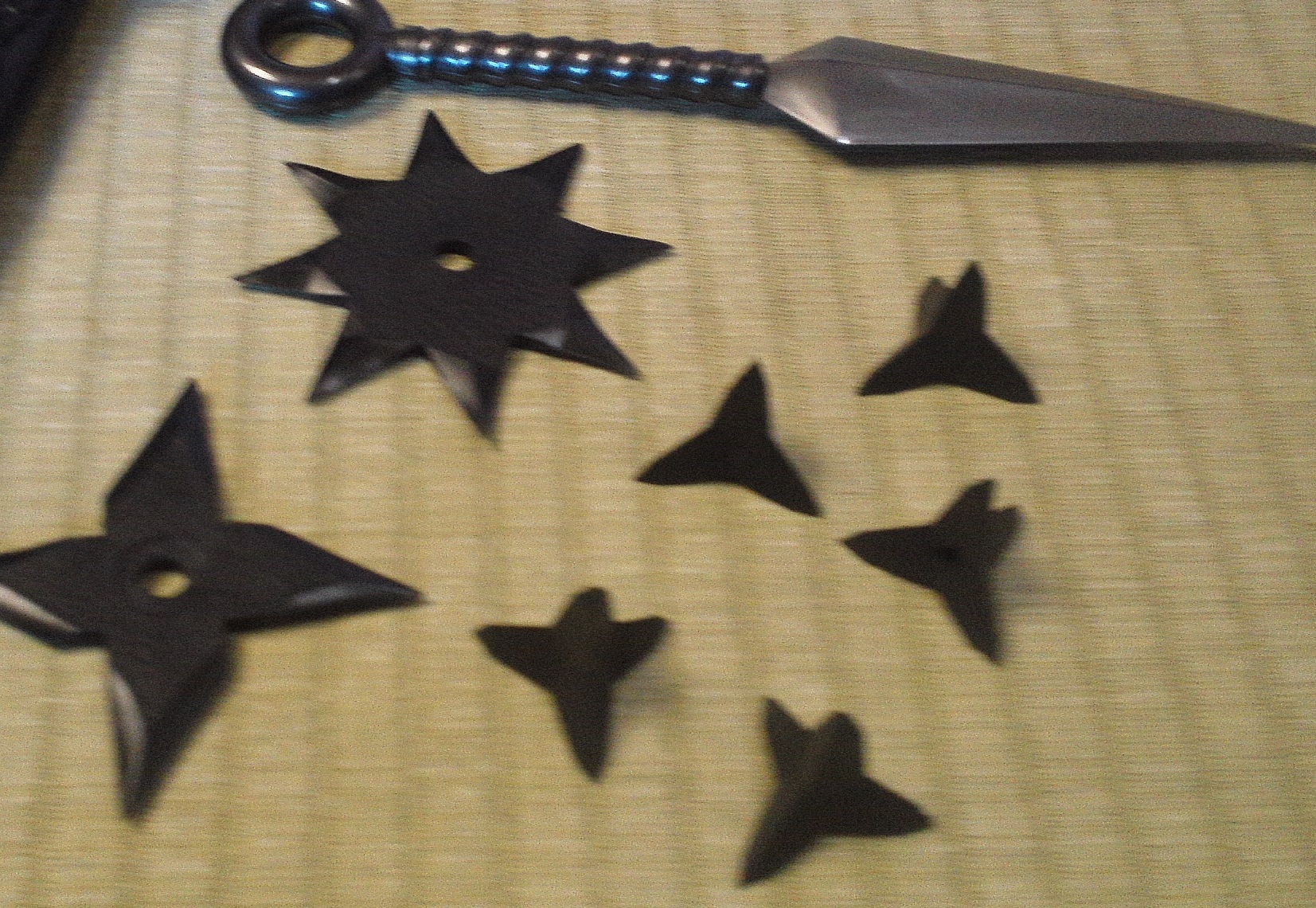 Shuriken, afflicted (not) and Marubishi
Shuriken, afflicted (not) and Marubishi
9 Communicate information
The way each other running down the information in the ninja each other, there is a "five-colored rice (My five colors)". We decided the meaning of each of the five colors of blue, yellow, red, white and black, and exchanged information by putting the rice painted in that color in the inn and so on. In case of secret writing, etc., cut the paper into thin strips, wrap it around a stick, and write letters on it. If you remove the paper from the stick, you can not read what it says, but the other party you want to communicate is that it can be read if you wrap the paper on a stick of the same thickness.
10 Unify the spirit
It is called the "Shingo-ji-ho- ho", and casts a spell with " Principles of the All-In-Ones" and marks nine marks with fingers. It was a mental unification law for keeping a normal mind. However, it is said that the ninja could maintain a strong will because it was not merely mere self-intention but based on the faith to protect itself.
Professionals who are charged with being a skilled person without people's knowledge
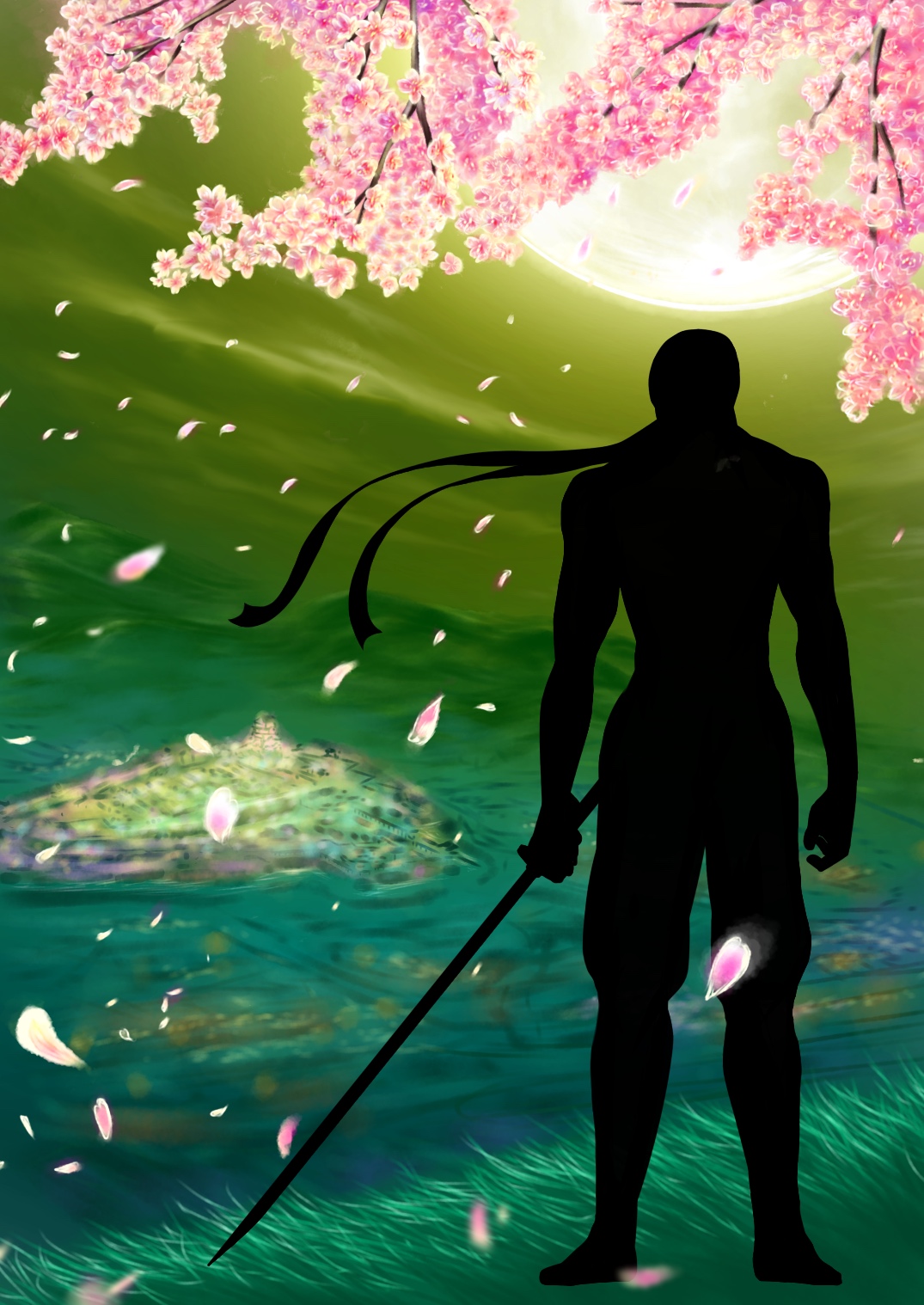
Well, how was it? Now, "Ninja" is a universal language, and he is active in the world of movies, comics and novels, but the actual ninja is not a superman, but an entity that supports the master and the employer from behind. did. In addition, the art used by them is not a magical magic, but a gift of rational techniques and devices necessary to carry out the task, and exerts an effect by adding daily training to it It was a thing.
Their mission is to infiltrate the enemy site, get what you need and take it home. If you do not come back alive, you will not be able to fulfill your mission, and your skills have been improved. However, there are few cases where their names will remain in history, even if they carry out a life-saving task. The Ninjutsu book presupposes that "being a skillful person without knowing people" is an excellent stealth. Shut up professional ... It is a creeping, I think that there is a part that strikes the chest of modern people somewhere.
It is not the front stage of history, but the nameless Shinobu who lived in the back world, but there was no doubt that they moved the history. The world of human beings does not consist of the front stage alone, and the point will not change in the present age. If you look at the ninja again while putting such things in the corner of your head, you may see something new.
References: Yuji Yamada "The History of Ninja" et al.
I want to read together!
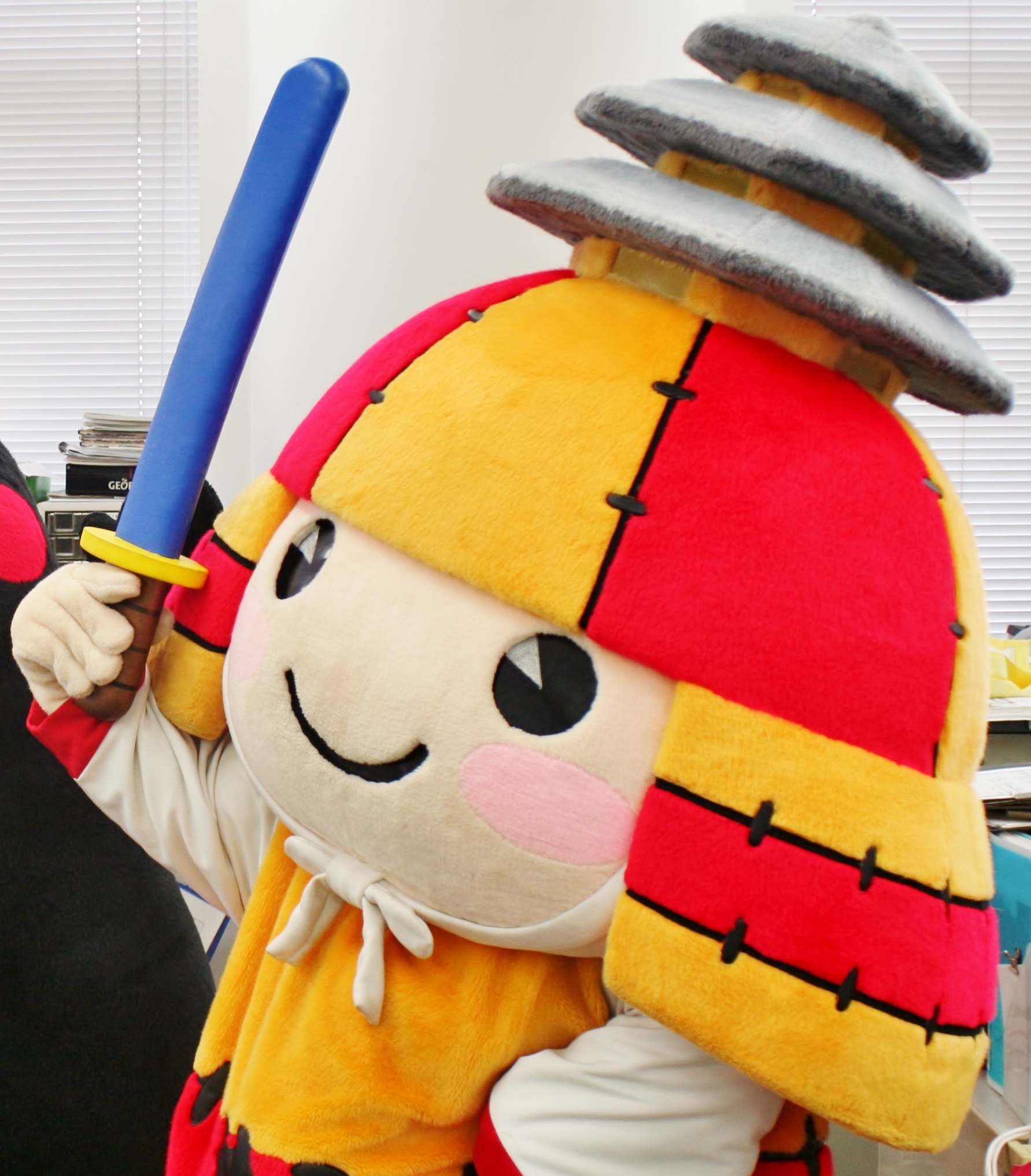
I am from Tokyo. Work at a publisher. He has been in the editorial department of historical magazines for 18 years, including 12 years as editor-in-chief. Although he left the editorial department, he has not burned out yet, and he has been voluntarily posting historical articles on note for 30 consecutive days, and is captured by Takagi editor-in-chief. We believe that "knowing history is knowing humans". I have no eyes on ramen.




